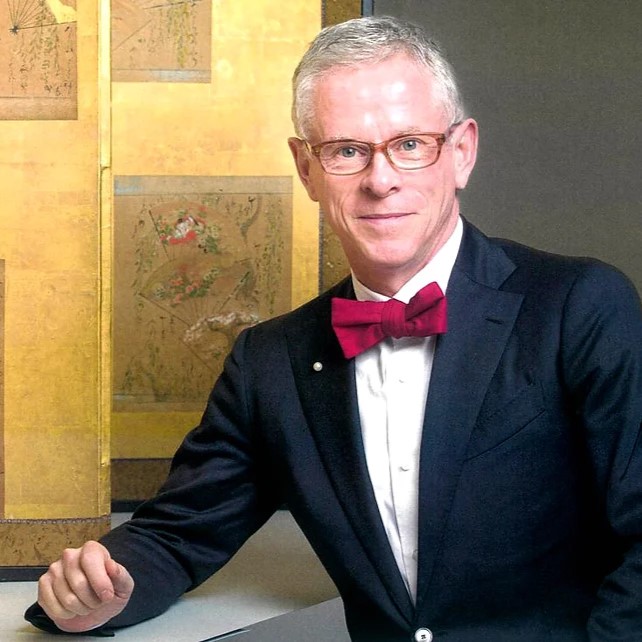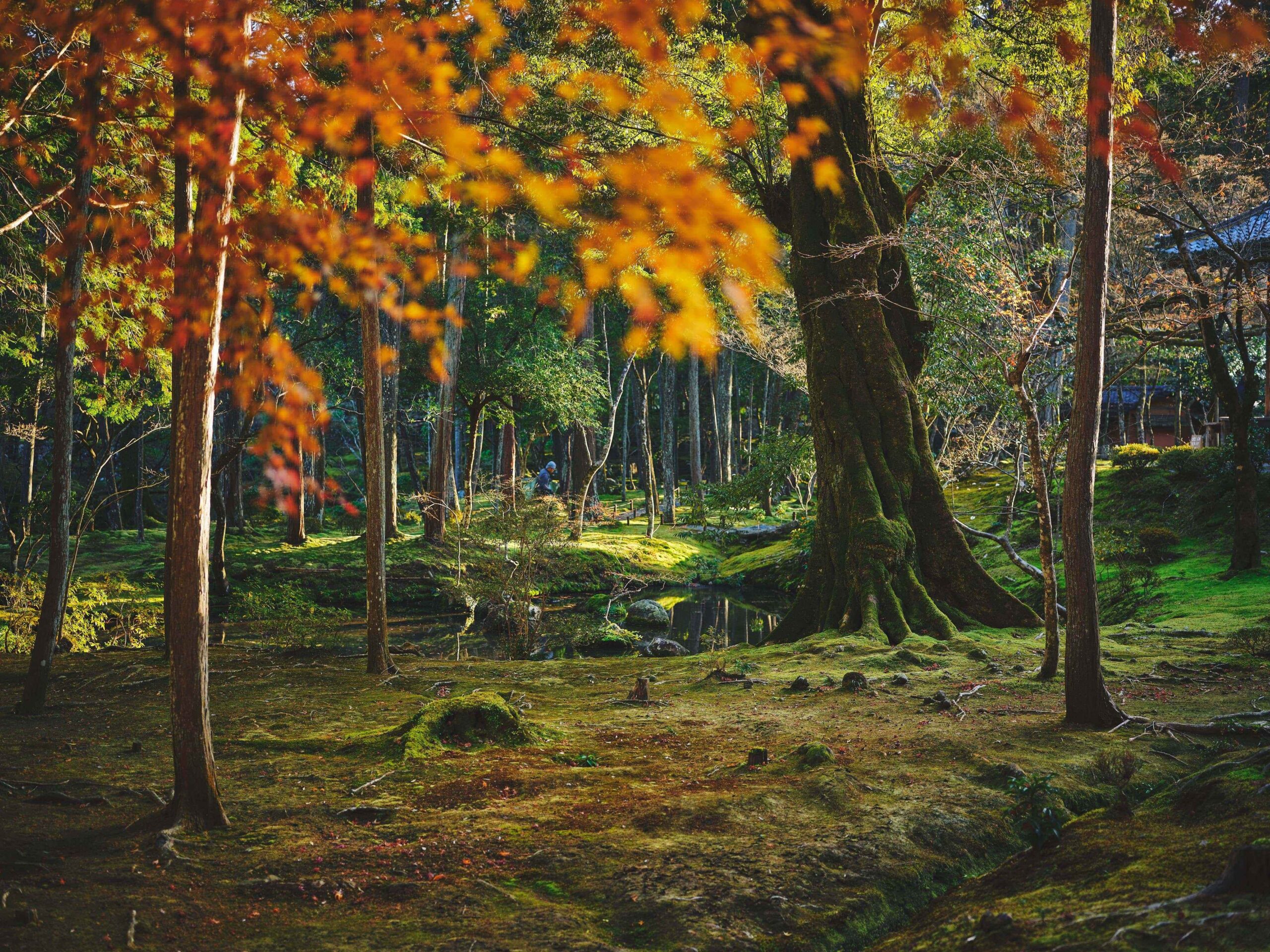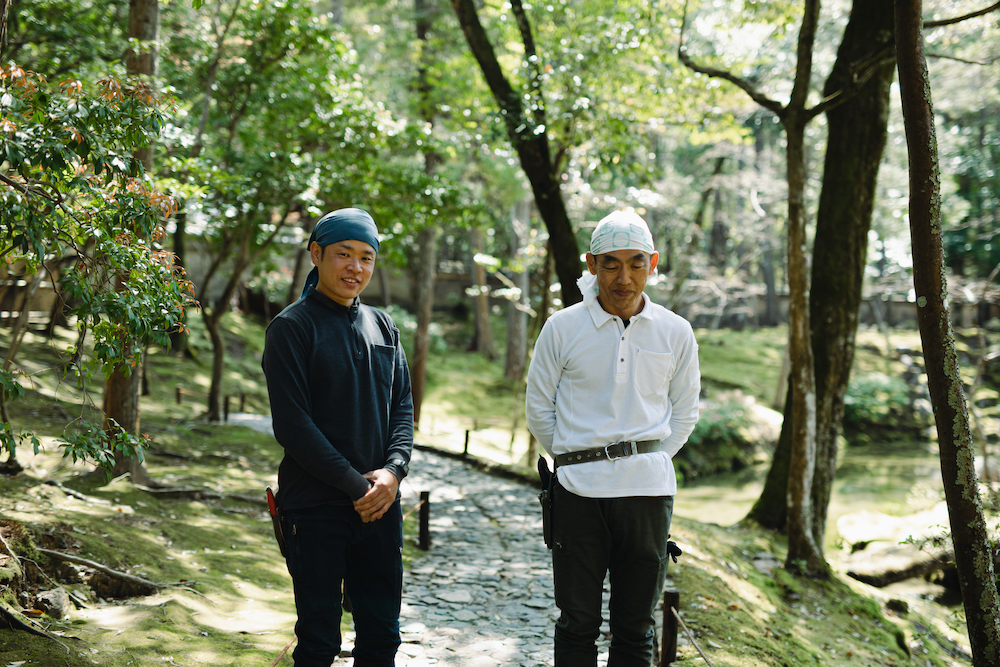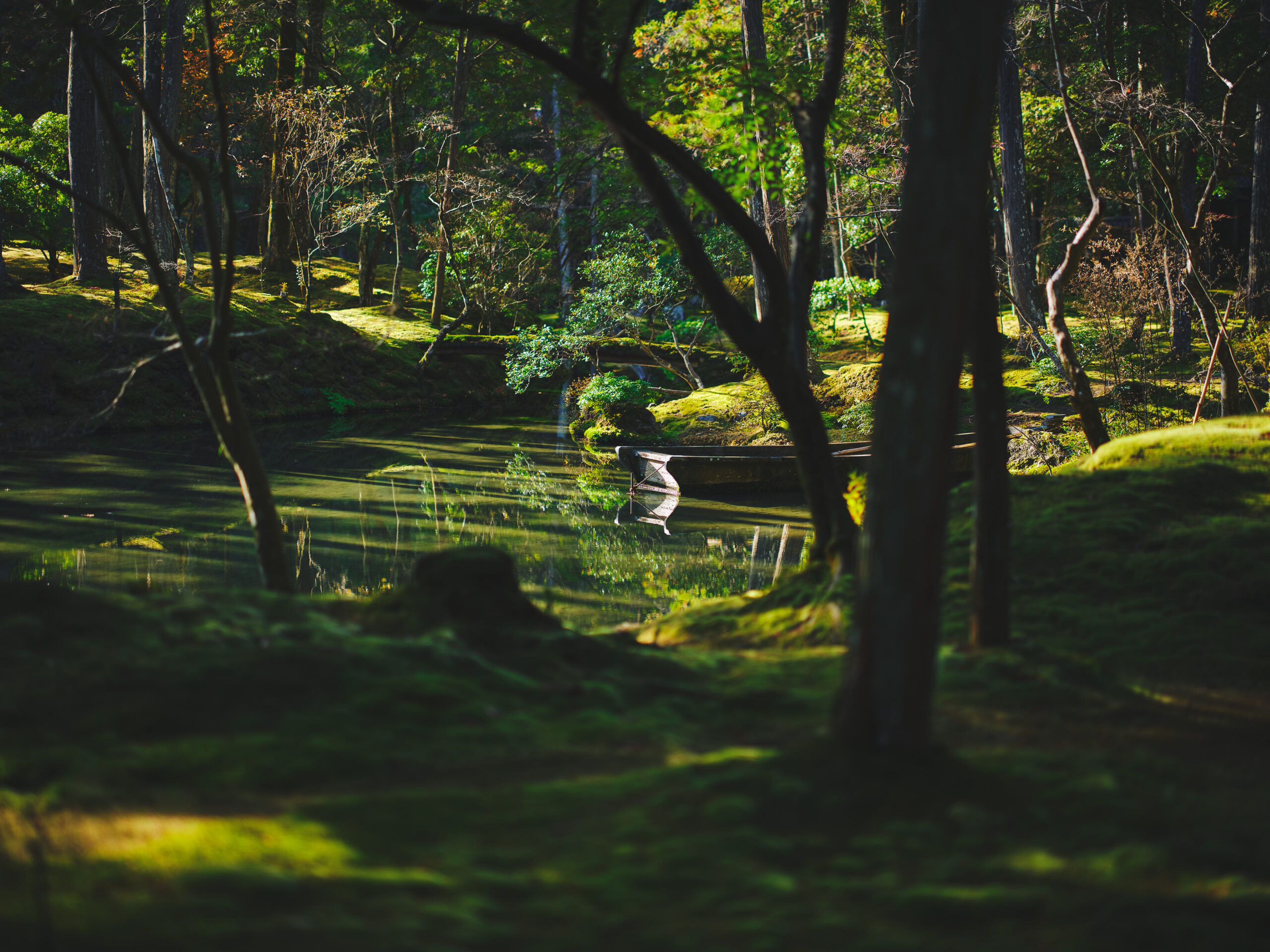2025.2.20
Winds of Gold—One Hundred Views of Saihoji Vol. 10
Peter MacMillan / a translator, scholar, poet
In this series of essays on Saihoji the renowned translator of Japanese poetry and poet Peter MacMillan records his impressions of and reflections on his visits to the garden throughout the four seasons. We hope that through these essays you the readers and fans of Saihoji can feel as if you are also present in the magical garden even when you cannot visit us.
Becoming the Moss
It is January and the garden is closed for a while for renovations and everywhere is still and quiet. Near the entrance to the moss garden a new green low bamboo pole fence marks the New Year. And there is a tall sasaki tree blooming with beautiful pink blossoms inside the entrance gate to the garden. In the garden there are some patches of moss thriving here and there, but it only highlights that it is the hibernation season for much of the moss. In one corner of the garden, I can hear the rings of the stone workers laying out a new stone path for the re-creation of an ancient waterway into the garden. The banging of their hammers pierces the quietness and the lulls between strokes makes the quietness even more pronounced.
The garden is covered in silvers and greys—the clouded-over sky, the barks of the trees seem sliver-like, and the water in the pond reflects like a tiny silver sea. It is my first time to visit the garden this year, and as on every visit I am always a little apprehensive as to where my next topic will come. I am reminded of the poem by Kahil Gibran, also about the sea:
It is said that before entering the sea
a river trembles with fear.
The river looks back to the path she has traveled from the mountain peaks through forests and villages and then in front of her she sees a vast ocean into which it seems she may disappear into forever. Despite that, there is no way to go back as going back in life is impossible for everything. And so, what must the river do?

The river needs to take the risk
of entering the ocean
because only then will fear disappear,
because that’s where the river will know
it’s not about disappearing into the ocean,
but of becoming the ocean.
The river does not disappear into the ocean, rather it becomes the ocean. I love this poem for several reasons. It is a lovely parallel to our human life. It shows us that to advance in life we must overcome fear, and that one of the best ways to overcome fears is to be willing to take risks, small and large. But most of all I love this poem because it allows us to see that we must become the ocean; in other words it shows us that the goal of life is to become one with everything else.
And that is the message that I would like to convey to our gentle readers at the beginning of the year. You may have many fears and apprehensions as the year starts, but like the river, you cannot go back; you can only go forward, so take a risk and go forth bravely—you will discover that you will not disappear into the ocean but rather become one with it as you become one with all living beings in nature. So, live fully the journey and become the ocean— become the moss!
Peter MacMillan
Peter MacMillan is a prize-winning translator, scholar, poet, and President of The Moon is a Boat Co., Ltd.
His translation, One Hundred Poets, One Poem Each (Hyakunin Isshu), was published in 2008, winning prizes in both Japan and the United States. After that, he completed an English translation of The Tales of Ise (Ise Monogatari), which was published by Penguin in 2016. He has also published a collection of poetry entitled Admiring Fields.
Awards:
Recipient of the Donald Keene Center Special Prize for the Translation of Japanese Literature
Recipient of the 44th Special Cultural Translation Prize from the Japan Society of Translators
Nominated for the PEN Award for Poetry Translation for the English translation of The Tale of Ise (Ise no Monogatari)

Up next
Most read

Your Heart
"Life and Death"





